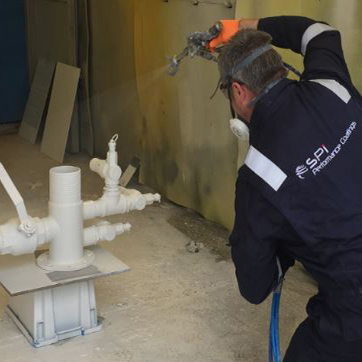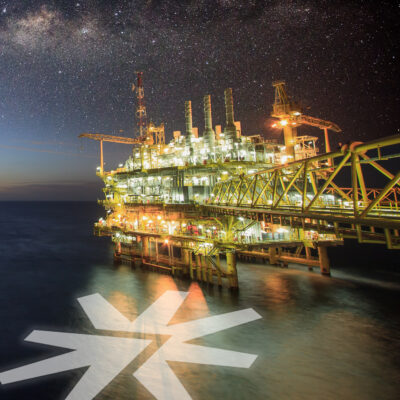Coating technology revolutionises asset maintenance – doubles lifespan compared to traditional methods
Project Summary
Offshore platforms, and other ferrous metal North Sea assets, are subject to corrosion and weathering. On average, traditional coating systems have a lifespan of 10 years before maintenance is required.
EonCoat technology has been designed to stop corrosion on carbon steel structures, and ferrous metal in situ by chemically alloying the steel structure. In addition to the inert alloying layer the water-based, two-part spray coating also forms a dense, protective ceramic of phosphate topcoat providing additional protection of the steel structure.
NZTC supported a trial of the technology along with partner Total E&P UK (TEPUK), who identified a 45 square meter area of steelwork on their Elgin A Wellhead platform.
TEPUK’s incumbent fabric maintenance contractor carried out the surface preparation, followed by the two part application of EonCoat by SPi Performance Coating personnel. The coating was then visually assessed, monitored, then retested after 12 months to provide comparative data.
The trial was deemed successful. There were no issues with product handling or spraying; and undamaged coating showed no signs of deterioration, with no evidence of under creep at x-cuts following a year of testing.
TEPUK’s Corrosion Technical Authority confirmed that areas of steel that are treated with EonCoat will see less corrosion when compared to areas treated with tradition protective coatings.
Industry value:
The anticipated lifespan of this technology is 20 years, compared to 10 years for traditional methods. The EonCoat technology has the potential for 50% cost savings.
Lessons learned:
The application was completed in challenging weather conditions, with little adverse effect on the coating system. At the end of the 12-month trial, it was noted that a diamond shaped area between the cross hatching showed some oxidisation. It is understood that this was due to the alloyed surface being removed when the paint was damaged. Previous trials have proven that if the EonCoat is left longer on the surface of the reactive ferrous metal, there is a deeper alloyed barrier (up to 5 microns instead of 2 microns) which would mitigate this issue.
Next steps include SPi Performance Coating personnel returning to site to touch up damaged areas, not only to complete the trial, but to prove the concept of ease of repair.
SPi plan to trial a larger area using techniques with the bristle blaster preparation – an integral method used on assets.
Let's work together
"Required" indicates required fields

